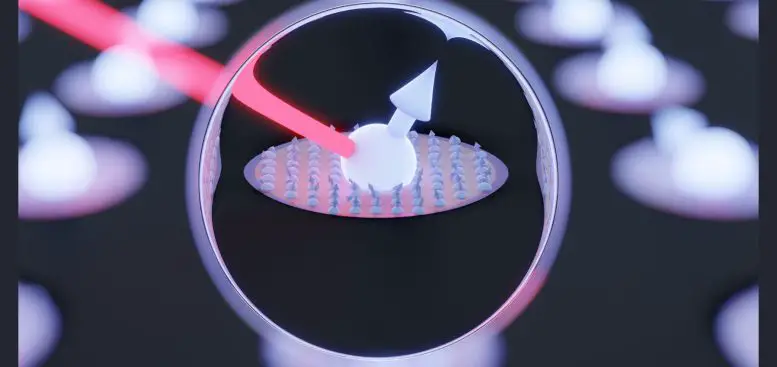As part of the worldwide effort to develop practical quantum networks and quantum computers, an international team of scientists has made significant progress in maintaining the quantum coherence of spin qubits of quantum dots. Thanks to these technologies, a number of industries and scientific research will change. They will impact everything from the secure transmission of information to the discovery of new materials and chemicals with unique properties, as well as the precise measurement of fundamental physical phenomena that require synchronized sensors.
Spin-photon interfaces are fundamental building blocks for quantum networks that allow static quantum information (such as the quantum state of an ion or a solid-state spin qubit) to be converted into light, that is, photons that can propagate over long distances. The real challenge is to find an interface that stores quantum information well and converts it to light efficiently.
Optically active semiconductor quantum dots are the most efficient spin-photon interface known to date, but extending storage times beyond a few microseconds has baffled physicists despite decades of research efforts. Now researchers from the University of Cambridge, the University of Linz and the University of Sheffield have demonstrated a simple material solution to this problem that improves the storage of quantum information beyond a hundred microseconds.
Quantum dots are crystal structures made up of thousands of atoms. The nuclei of these atoms each have a magnetic dipole moment that binds to the electron of the quantum dot and can cause the loss of quantum information stored in the electronic qubit. The result of the research group, published Journal Nature Nanotechnologyis that in a device made of semiconductor materials with the same lattice parameter, the cores “feel” the same environment and behave in harmony. As a result, it is now possible to filter out this nuclear noise and achieve an almost double increase in storage time.
“This is a completely new regime for optically active quantum dots in which we can turn off interaction with nuclei and repeatedly focus the spin of the electron to maintain its quantum state,” said Claire Le Gall, of the Cavendish Laboratory in Cambridge. she led the research. to show. “We demonstrated hundreds of microseconds in our work, but actually now that we are in this regime, we know that much longer coherence times are available. The short coherence time for spins in quantum dots has been a major barrier to applications, and this discovery offers a clear and simple solution to this problem. “
Studying time scales of one hundred microseconds for the first time, the researchers were pleasantly surprised to discover that the electron only sees noise from nuclei, as opposed to electrical noise in the device, for example. This is indeed a remarkable position, because the nuclear ensemble is an isolated quantum system and the coherent electron will be the gateway to the quantum phenomenon in the large nuclear spin ensemble.
Another thing that surprised the researchers was the “sound” from the nuclei. This was not as harmonic as originally anticipated, and there is room for further improvement in the quantum coherence of the system through further materials engineering.
“Once we started working with the coherent lattice material system used in this work, it wasn’t easy to get quantum dots with well-defined properties and good optical quality,” says Armando Rastelli, co-author of this paper at the university. of Linz. . “It’s great to see that an initial curiosity-driven line of research towards a highly ‘exotic’ system and the persistence of experienced team members Santana Manna and Simon Covre da Silva have led to devices based on these impressive results. Now we know what our nanostructures do and we and our collaborators can better understand the properties of our nanostructures. We are excited about the possibility of developing it as well.”
“One of the most exciting things about this research is to tame a complex quantum system: one hundred thousand nuclei tightly coupled to the well-controlled spin of an electron,” explains Ph.D. student Leon Zaporskyi is the first author of the article. “Most researchers approach the problem of isolating a qubit from noise by removing all interactions. Its qubits are somewhat like Schrodinger’s cats, with a calmed down tail, barely responding when someone pulls its tail. Our ‘cat’ is getting strong stimuli, which means we can get more pleasure out of it in practice. It’s coming.”
“Quantum dots now combine high photonic quantum efficiency with a long spin coherence time,” explains Professor Mete Atatürk, co-author of the paper. “We envision that in the near future, these devices will enable the creation of entangled light states for purely photonic quantum computing, enabling fundamental experiments of quantum control of the nuclear spin ensemble.”
Source: Port Altele
